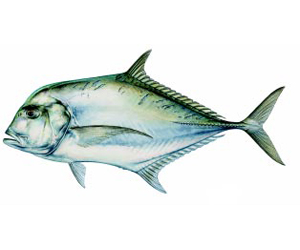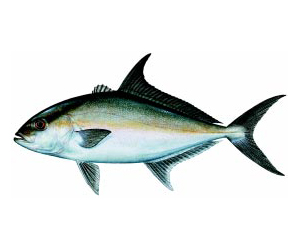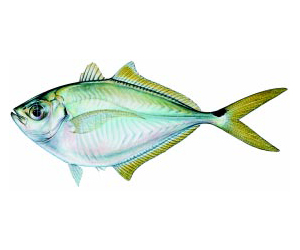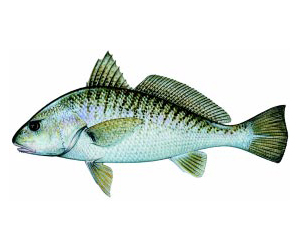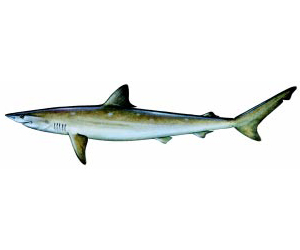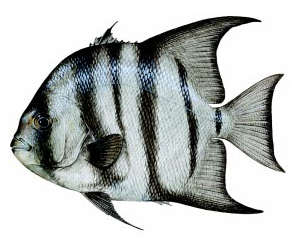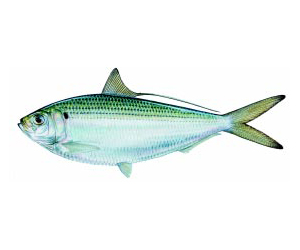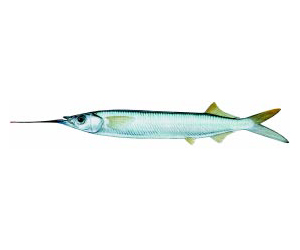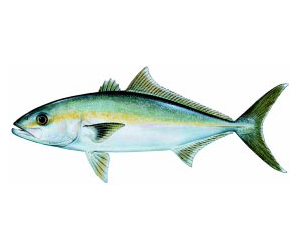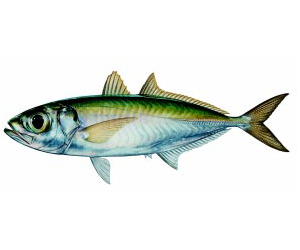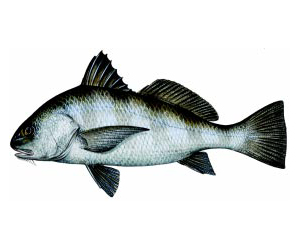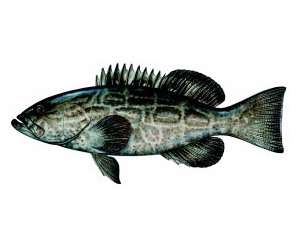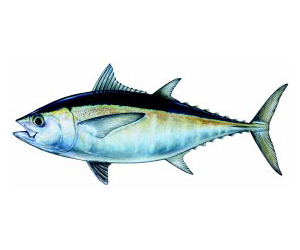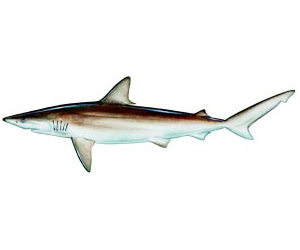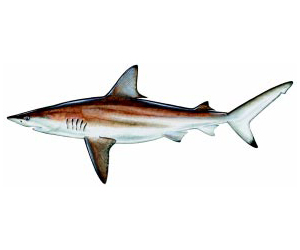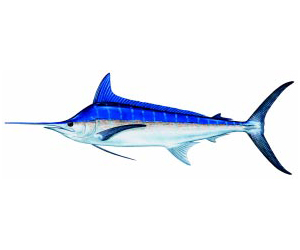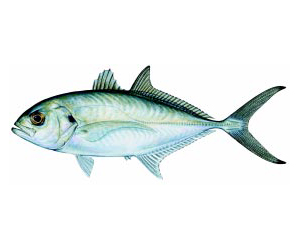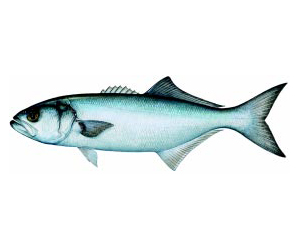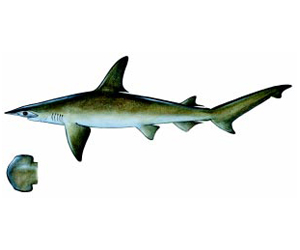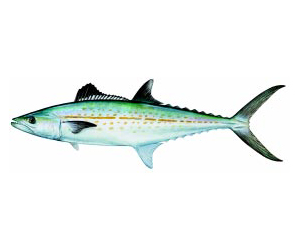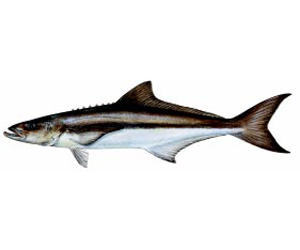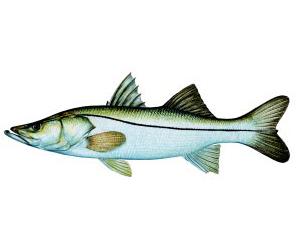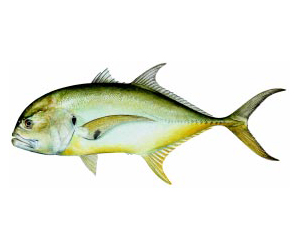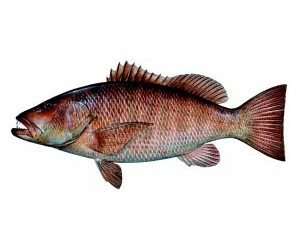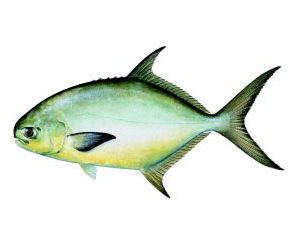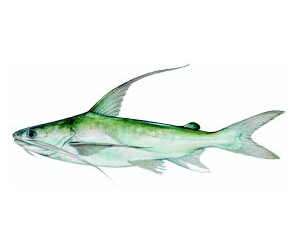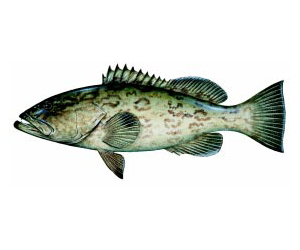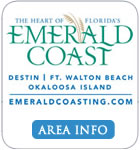Fish Photos Page I
- African Pompano
- Almaco Jack
- Atlantic Bumper
- Atlantic Croaker
- Atlantic Sharpnose Shark
- Atlantic Spadefish
- Atlantic Thread Herring
- Ballyhoo
- Banded Rubberfish
- Bigeye Scad
- Black Drum
- Black Grouper
- Blackfin Tuna
- Blacknose Shark
- Blacktip Shark
- Blue Marlin
- Blue Runner
- Bluefish
- Bonnethead Shark
- Cero (Cero Mackerel)
- Cobia
- Common Snook
- Crevalle Jack
- Cubera Snapper
- Dolphin
- Florida Pompano
- Gafftopsail Catfish
- Gag Grouper
- Grass Porgy
- Gray Snapper (Mangrove Snapper)
- Gray Triggerfish
- Great Barracuda
- Greater Amberjack
- Gulf Flounder
- Gulf Kingfish
- Hardhead Catfish
- Jewfish/Goliath
- Jolthead Porgy
- King Mackerel
- Knobby Porgy
- Ladyfish
- Lane Snapper
- Leatherjacket
- Lesser Amberjack
- Little Tunny
- Littlehead Porgy
- Lookdown
- Palomenta
- Permit
- Pigfish
- Pinfish
- Queen Snapper
- Red Drum
- Red Grouper
- Red Porgy
- Red Snapper
- Round Scad
- Sailfish
- Sand Perch
- Sand Seatrout
- Sandbar Shark
- Scamp
- Sheepshead
- Shortfin Mako
- Silk Snapper
- Silver Perch
- Southern Kingfish
- Spanish Mackerel
- Spot
- Spottail Pinfish
- Spotted Seatrout
- Swordfish
- Tarpon
- Tomtate
- Tripletail
- Vermillon Snapper
- Wahoo
- Warsaw Grouper
- White Grunt
- White Marlin
- Yellowfin Tuna
- Yellowmouth Grouper
African Pompano
Body is deep and compressed. Coloration is metalic -blue above, silvery below. Snout is blunt. Pelvic fins are longer than the maxilla. Second dorsal and anal fins are falcate. Size: to 91cm (3 ft.) and 19 kg (42 lbs) Normally found: Young are found in the open ocean. Adults are found to depths of 55m (180 ft.) often associated with reefs, wrecks and rock ledges. Remarks: Great fighter and good to eat. Often found in schools over structure.
PROTECTED SPECIES ACT: *Must remain in whole condition until landed ashore (heads & tails intact) # Measured as total length. + Harvest prohibited by or with the use of any multiple hook in conjunction with live or dead natural bait.
Almaco Jack
Deep-bodied amberjack; sometimes darker in coloration; front of soft dorsal and of anal fins high and elongated; body more flattened than banded rudderfish or greater amberjack; no scutes. Similar fish: other Seriola. Normally found: wide-ranging in OFFSHORE waters, not a common catch; young are associated with Sargassum. Size: usually less than 20 pounds.
Atlantic Bumper
Silvery to golden below; anal and caudal fins yellowish; conspicuous black saddle on caudal peduncle and small black area at edge of opercle; lower profile more arched than upper profile; lateral line strongly arched toward front. Size: to 30 cm (1 ft.). Normally found: one of the most abundant inshore fishes in tropical America; commonly enters bays and estuaries.
Atlantic Croaker
Inferior mouth; 3 to 5 pairs of small barbels on chin; silver-gray or bronze body with dark oblique wavy bars or lines; iridescent especially on head; preopercle strongly serrated. Similar fish: spot, Leiostomus xanthurus (has no chin barbels and has a dark blotch on shoulder). Size: usually less than 2 pounds. Normally found: generally found north of Tampa Bay on the west coast, and north of Cape Canaveral on the east coast; young fish found in estuaries; older fish (2 to 3 years) inhabit deep OFFSHORE waters during the winter months and move into bays and estuaries during the spring, summer, and fall. Remarks: during spawning becomes bronze or yellow in color; spawning apparently occurs OFFSHORE in fall; longevity 2 to 4 years.
Atlantic Sharpnose Shark
Long and flattened snout; white trailing edge of pectoral; black-edged dorsal and caudal fins, especially when young; may have small whitish spots onsides; furrows in lips at the corners of the mouth; outer margin of teeth notched; second dorsal fin originates over middle of anal fin; brown to olivegray in color with white underside; slender body. Similar fish: other carcharhinids. Normally found: INSHORE species, even found in surf; also common in bays and estuaries; adults occur OFFSHORE. Size: a small species, 2 to 4 feet. Remarks: mature adults between 2 to 2.75 feet long; 4-7 newborns range from 9 to 14 inches in length; adults feed on small fish and crustaceans.
PROTECTED SPECIES ACT: *Must remain in whole condition until landed ashore (heads & tails intact) # Measured as total length. + Harvest prohibited by or with the use of any multiple hook in conjunction with live or dead natural bait.
Atlantic Spadefish
Silvery with 4 to 6 black vertical bands on each side which sometimes become obscure in larger fish; deep, flattened body; separated first and second dorsal fins; concave caudal fin; anterior rays of second dorsal fin and anal fin elongated. Similar fish: no close resemblance, but frequently and mistakenly called angelfish. Normally found: INSHORE and NEARSHORE, around natural and artificial reefs, and especially near navigation markers in 15 to 20 feet of water. Size: most catches less than 2 pounds, known to reach 15 pounds. Remarks: spawns in spring and summer; travels in large schools; small juveniles almost totally black, known to drift on their sides and mimic floating debris; feeds on crustaceans, small encrusting invertebrates, and may nibble on tentacles of jellyfish.
Atlantic Thread Herring (Gizzard Shad)
Back dark blue/gray, sides silvery, belly white; small head Normally found: in salt water from Cape Cod to Brazil, including Gulf of Mexico Size: up to 16" Remarks: has scales on ridge of back before dorsal fin.
Ballyhoo
Tip of lower jaw and upper lobe of caudal fin orange-red; pectoral fin short; tip of pelvic fin extends past beginning of dorsal fin; dorsal and anal fins unscaled. Normally found: young are pelagic; adults abundant in bays and nearshore waters, near reefs Size: up to 16"
Banded Rubberfish
Fish less than 11 inches long have dark band from eye to first dorsal fin and six prominent bars on body; larger fish are bluish, greenish, or brown; soft dorsal base about twice the length of the anal fin; tail-lobe white tipped. Similar fish: other Seriola. Normally found: NEARSHORE and OFFSHORE over hard bottom, generally in shallower water than other amberjacks; young associated with weed lines or floating debris and may follow sharks and other large fish. Size: usually less than 10 pounds. Remarks: adults feed on fish and shrimp; spawns OFFSHORE most of year.
Bigeye Scad
Eye very large – diameter greater than snout length; no detached dorsal and anal finlets; two widely separated fleshly tabs on inside of rear edge of gill chamber; scutes present only on rear part of lateral line. Size: to 60 cm (2 ft.)., but usually less than 30 cm (1 ft.).
Black Drum
High arched back; 10 to 14 pairs of chin barbels; gray or black colored body in adults; young have 4 to 6 vertical bars; has cobblestone like teeth capable of crushing oysters; scales large. Similar fish: red drum, Sciaenops ocellatus; the vertical bars on juvenile black drum are somewhat similar to those on sheepshead, Archosargus probatocephalus; and spadefish, Chaetodipterus faber. Normally found: INSHORE fish common to bays and lagoons; bottom dweller often found around oyster beds; also OFFSHORE. Size: common to 30 pounds. Remarks: largest member of the drum family; spawns nearshore in winter and early spring; feeds on oysters, mussels, oysters, crabs, shrimp, and occasionally fish; longevity to 35 or more years.
Black Grouper
Olive or gray body coloration with black blotches and brassy spots; gently rounded preopercle; (see gag, next page) Similar fish: gag, M. microlepis; yellowfin grouper, M. venenosa. Normally found: OFFSHORE species; adults associated with rocky bottoms, reefs, and drop off walls in water over 60 feet deep; young may occur INSHORE in shallow water. Size: common to 40 pounds, may attain weights exceeding 100 pounds; no Florida record because of identity confusion with gag, which are mistakenly called “black grouper.” Remarks: spawns between May and August; protogynous hermaphrodites, young predominately female, transforming into males as they grow larger; larger individuals generally in greater depths; feeds on fish and squid.
Blackfin Tuna
Pectoral fin moderately long, reaching point below beginning of 2nd dorsal fin; 2nd dorsal fin dusky; all finlets dusky, with white edges; dorsal finlets sometimes turn yellowish at base after death; a broad, brownish stripe along upper part of side; eye large; 19 to 25 gill rakers (usually 21 to 23) on 1st arch. Size: to 1 m (3.25 ft.) and 19 kg (42 lbs.). Normally found: near shore and offshore.
Blacknose Shark
Distinctive dusky smudge at snout tip (more prominent in young); no dark tips on fins; pale olive-gray above, whitish below; 1st dorsal fin begins above rear corner of pectoral fin; no mid dorsal ridge; upper teeth very asymmetrical, those toward front coarsely serrated at base. Size: up to 1.5 m (5 ft.). Normally found: common in bays and lagoons.
Blacktip Shark
Dark bluish gray (young paler) above, whitish below; distinctive whitish stripe on flank; inside tip of pectoral fin conspicuously black; dorsal fin, anal fin, and lower lobe of caudal fin also black-tipped in young, fading with growth; 1st dorsal fin begins above axil of pectoral fin; snout long, almost v-shaped from below; no mid dorsal ridge; upper and lower teeth serrated, nearly symmetrical. Size: Up to 2.5 m (8.25 ft.). Normally found: principally pelagic, but often comes inshore in large schools, particularly in association with Spanish mackerel; frequently the most common shark (especially young) in clear-water cuts and along beaches in Florida and Bahamas. Similar species: in the Spinner Shark the 1st dorsal fin begins above a point behind the pectoral fin, and the snout is longer.
Blue Marlin
Color cobalt blue on top shading to silvery white on bottom; upper jaw elongated in form of a spear; dorsal fin pointed at front end; pectoral fin and anal fin pointed; lateral line reticulated (interwoven like a net), difficult to see in large specimens; no dark spots on dorsal fin; body covered with imbedded scales ending in one or two sharp points. Similar fish: white marlin, T. albidus (white has rounded dorsal at front end, rounded tip of pectoral and anal fins, and spots on the dorsal fin). Normally found: OFFSHORE, a bluewater fish. Size: largest of the Atlantic marlins, common to 11 feet, known to exceed 2,000 pounds. Remarks: all of trophy size are females; males do not exceed 300 pounds; make trans-Atlantic migrations; spawning procedures unknown; feeds on squid and pelagic fishes, including blackfin tuna and frigate mackerel.
Blue Runner
Color light olive to bluish green above, silvery gray to golden below; frequently black spot on operculum; readily distinguished from crevalle jack by lack of a dark blotch on the pectoral fin; tail tips blackish. Similar fish: bluefish, Pomatomus saltatrix; other Caranx. Normally found: juveniles found OFFSHORE; adults NEARSHORE in schools, but something ranging INSHORE as well. Size: usually less than 1 pound (11 inches). Remarks: matures by 9 to 10 inches; spawns OFFSHORE from January through August; young form schools associated with floating objects, and have been observed living inside the bell of jellyfish; adults feed on fish, shrimp, and squid.
Bluefish
Color blue or greenish blue on back, sides silvery; mouth large; teeth prominent, sharp, and compressed; dorsal and anal fins nearly the same size; scales small; lateral line almost straight. Similar fish: blue runner, C. crysos. Normally found: young usually INSHORE spring and summer, moving OFFSHORE to join adults fall and winter; strong migration of northeast Atlantic stock to Florida east coast in winter. Size: most west coast catches under 3 pounds, much larger on east coast. Remarks: travels in large schools, following schools of baitfish; cannibalistic; all members of a given school about the same size; spawning occurs OFFSHORE in spring and summer.
Bonnethead Shark
Broadly widened head in the shape of a shovel; only slight indentation of anal fin; front of head not notched at midline; gray or grayish-brown in color. Similar fish: other hammerhead sharks. Normally found: INSHORE species found in bays and estuaries. Size: commonly 3 to 4 feet. Remarks: matures at about 3 feet in length and bears 6 to 12 young at a time; feeds chiefly on crabs and other crustaceans.
Cero (Cero Mackerel)
Color of back iridescent bluish green; sides silvery; yellow spots forming lines above and below a bronze stripe from pectoral fin to base of the tail; front of first dorsal is bluish black; lateral line curves gradually to base of caudal fin. Similar fish: Spanish mackerel, S. maculatus; king mackerel, S. cavalla. Normally found: NEARSHORE and OFFHSORE fish occurring mainly in south Florida, especially over coral reefs and wrecks. Size: common to 5 pounds. Remarks: unlike other mackerels, does not stray far from south Florida waters; spawns OFFSHSORE in mid summer; feeds on small fish and squid.
Cobia (Ling)
Long, slim fish with broad depressed head; lower jaw projects past upper jaw; dark lateral stripe extends through eye to tail; first dorsal fin comprised of 7 to 9 free spines; when young, has conspicuous alternating black and white horizontal stripes. Similar fish: remora, Eceneis naucrates. Normally found: both INSHORE and NEARSHORE inhabitating inlets, bays, and among mangroves; frequently seen around buoys, pilings, and wrecks. Size: common to 30 pounds. Remarks: spawns in spring and early summer; feeds on crabs, squid, and small fish.
Common Snook
Distinct black lateral line; high, divided dorsal fin; sloping forehead; large mouth, protruding lower jaw; grows much larger than other snooks; pelvic fin yellow. Similar fish: other Centropomus. Normally found: from central Florida south, usually INSHORE in coastal and brackish waters, along mangrove shorelines, seawalls, and bridges; also on reefs and pilings. Size: most catches 5 to 8 pounds. Remarks: spawns primarily in summer; cannot tolerate water temperatures below 60 degrees F; can tolerate wholly fresh or saltwater; schools along shore and in passes during spawning season; feeds on fish and larger crustaceans.
Crevalle Jack
Color bluish-green to greenish-gold back and silvery or yellowish belly; soft dorsal and anal fins almost identical in size; prominent black spot on operculum (gill cover); black spot at the base of each pectoral fin; no scales on throat. Similar fish: other Caranx. Normally found: common to both INSHORE waters and the open sea. Size: usually 3 to 5 pounds. Remarks: tolerates a wide range of salinities; schools corner a pod of baitfish at the surface and feed with commotion that can be seen for great distances; feeds mainly on small fish; peak spawning occurs OFFSHORE from March through September.
Cubera Snapper
Color dark brown or gray, may have a reddish tinge; broad-based triangular tooth patch on roof of mouth without a posterior extension; despite its specific name, which translates to “blue-fin,” the fins have only a slight tinge of blue; canine teeth in both jaws very strong; one pair of canines enlarged and visible even when mouth is closed. Similar fish: gray snapper, L. griseus (gray snapper has anchor shaped tooth patch on roof of mouth); other snappers. Normally found: juveniles INSHORE in grass beds; adults OFFHORE or NEARSHORE over wrecks, reefs, and ledges. Size: common to 40 pounds. Remarks: the largest of the snappers, ranging to 125 pounds; not common anywhere in its range; feeds on fishes and larger crustaceans; in the Keys, spawns during later summer.
Dolphin
Bright greenish blue above, yellow on sides, with capability of flashing purple, chartreuse, and a wide range of other colors; body tapers sharply from head to tail; irregular blue or golden blotches scattered over sides; anterior profile of head on adult males is nearly vertical; head of females more sloping; the single dark dorsal fin extends from just behind the head to the tail; anal fin margin concave and extending to tail. Similar fish: pompano dolphin, C. equisetis; the pompano dolphin has squarish tooth patch on tongue (oval tooth patch on dolphin) and fewer dorsal rays (48 to 55 vs. 55 to 65 on dolphin). Normally found: OFFSHORE in warm waters. Size: common to 30 pounds. Remarks: one of the fastest-growing fish, thought to live no more than 5 years; swimming speed estimated at 50 knots; spawns in warm oceanic currents throughout much of the year; young found in sargassum weed; feeds on flying fish and squid.
Florida Pompano
Greenish gray on back, shading to silvery sides; fish in dark waters showing yellow on throat, pelvic, and anal fins;deep flattened body with small mouth; no scutes;22 to 27 soft dorsal rays; 20 to 23 soft anal rays;origin of anal fin slightly behind origin of second dorsal. Similar fish: permit, T. falcatus; palometa, T. goodei; the permit is deeper bodied; dorsal body profile not strongly angled at insertion of second dorsal fin; pompano rarely grow larger than 6 pounds, permit common to 40 pounds. Normally found: INSHORE and NEARSHORE waters, especially along sandy beaches, along oyster bars, and over grassbeds, often in turbid water; may be found in water as deep as 130 feet. Size: usually less than 3 pounds. Remarks: spawns OFFSHORE between March and September; feeds on mollusks and crustaceans, especially sand fleas; local movements are influenced by the tide, and seasonal movements are influenced by temperature.
Gafftopsail Catfish
Bluish above; silvery below; dorsal and pectoral fins with long, fleshy filaments on spines; barbel at corner of mouth flattened, band like, and very elongate, sometimes reaching anal fin; only 2 barbels on chin. Size: to 60 cm (2 ft.) and 2.5 kg (5 to 6 lbs.). Normally found: continental waters; enters brackish waters; usually less common than the hardhead catfish. Remarks: commonly caught by anglers along bridges, piers, and catwalks; a good food fish, but not much used.
Gag Grouper
Brownish gray in color with dark worm-like markings on sides; strong serrated spur at bottom margin of preopercle, less noticeable in large specimens; fins dark, with anal and caudal having white margin; often confused with black grouper; most noticeable differences are brassy spots on black grouper; tail of gag is slightly concave, black grouper’s tail is square; gag has white margin on anal and caudal fins, black does not; under 10 pounds, gag’s spur on preopercle is distinctive, where black is gently rounded. Similar fish: black grouper, M. bonaci. Normally found: adults OFFSHORE over rocks and reefs; juveniles occur in seagrass beds INSHORE. Size: common to 25 pounds. Remarks: forms spawning aggregations in water no shallower than 120 feet in Middle Grounds area, January through March; current research to identify similar aggregations off the Atlantic coast is ongoing; young gags are predominantly female, transforming into males as they grow larger; feeds on fish and squid.
Illustrations by: Diane Rome Peebles Data From Florida Fish and Wildlife Conservation Commission.
For additional information on Saltwater Fishing Regulations... click here.
PROTECTED SPECIES ACT: It is unlawful to harvest, possess, land, purchase, sell, or exchange the following species: Nassau Grouper, Goliath Grouper (Jewfish), Sawfish, Basking Shark, Whale Shark, Spotted Eagle Ray, Sturgeon, White Shark, Sand Tiger Shark, Bigeye Sand Tiger Shark, Manta Ray, Spiny Dogfish, Longspine Urchin, Stony, Hard and Fire Corals, Sea Fans, Florida Queen Conch and Bahama Starfish. Harvest of live rock in state waters is prohibited. SEATROUT REGIONS “Northeast Region” means all state waters lying north of the Flagler-Volusia County Line to the Florida-Georgia border, and adjacent federal Exclusive Economic Zone (EEZ) waters. “Northwest Region” means all state waters north and west of a line running due west from the westernmost point of Fred Howard Park Causeway (28E9.350’N 82E48.398’W.), which is approximately 1.17 nautical miles south of the Pasco-Pinellas County Line to the Florida-Alabama border, and adjacent federal EEZ waters. “South Region” means state waters lying between the Flagler-Volusia County Line on the Atlantic Ocean and the southern boundary of the Northwest Region on the Gulf of Mexico in Pinellas County and adjacent federal EEZ waters. ORNAMENTAL TROPICAL FISH AND PLANTS MINIMUM SIZE LIMIT (Total length) Spanish Hogfish 2” Spotfin Hogfish 3” Porkfish 11/2” MAXIMUM SIZE LIMIT (Total length) Angelfish (except Rock Beauty) 8” Butterflyfish, Jawfish 4” Rock Beauty 5” Gobies 2” Spanish Hogfish 8” Spotfin Hogfish 8” BAG LIMIT Fishes / Invertebrates: 20 per person per day. No more than 5 Angelfish and no more than 6 Octocoral colonies PLANTS: 1 gallon per person per day. Live landing and live well requirements. Harvest in Biscayne National Park & John Pennekamp State Park prohibited.

